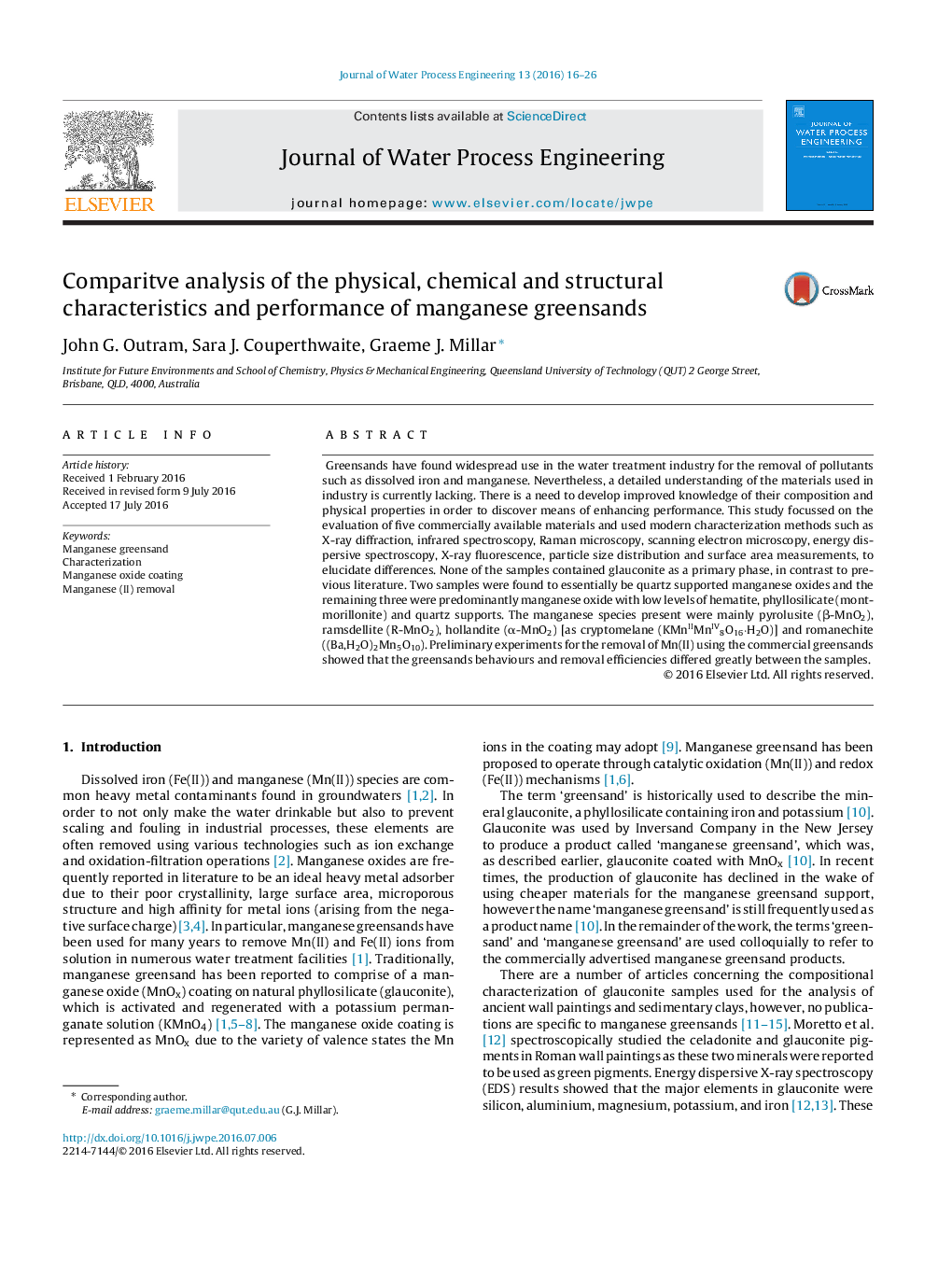| Article ID | Journal | Published Year | Pages | File Type |
|---|---|---|---|---|
| 4909940 | Journal of Water Process Engineering | 2016 | 11 Pages |
Abstract
Greensands have found widespread use in the water treatment industry for the removal of pollutants such as dissolved iron and manganese. Nevertheless, a detailed understanding of the materials used in industry is currently lacking. There is a need to develop improved knowledge of their composition and physical properties in order to discover means of enhancing performance. This study focussed on the evaluation of five commercially available materials and used modern characterization methods such as X-ray diffraction, infrared spectroscopy, Raman microscopy, scanning electron microscopy, energy dispersive spectroscopy, X-ray fluorescence, particle size distribution and surface area measurements, to elucidate differences. None of the samples contained glauconite as a primary phase, in contrast to previous literature. Two samples were found to essentially be quartz supported manganese oxides and the remaining three were predominantly manganese oxide with low levels of hematite, phyllosilicate (montmorillonite) and quartz supports. The manganese species present were mainly pyrolusite (β-MnO2), ramsdellite (R-MnO2), hollandite (α-MnO2) [as cryptomelane (KMnIIMnIV8O16·H2O)] and romanechite ((Ba,H2O)2Mn5O10). Preliminary experiments for the removal of Mn(II) using the commercial greensands showed that the greensands behaviours and removal efficiencies differed greatly between the samples.
Keywords
Related Topics
Physical Sciences and Engineering
Chemical Engineering
Chemical Engineering (General)
Authors
John G. Outram, Sara J. Couperthwaite, Graeme J. Millar,
